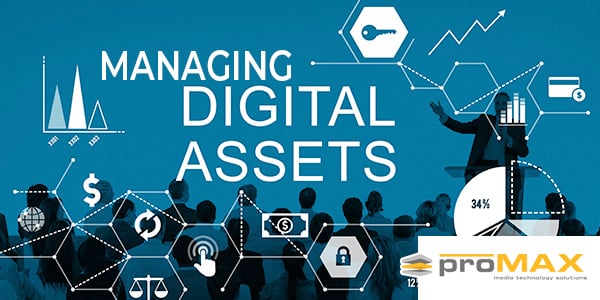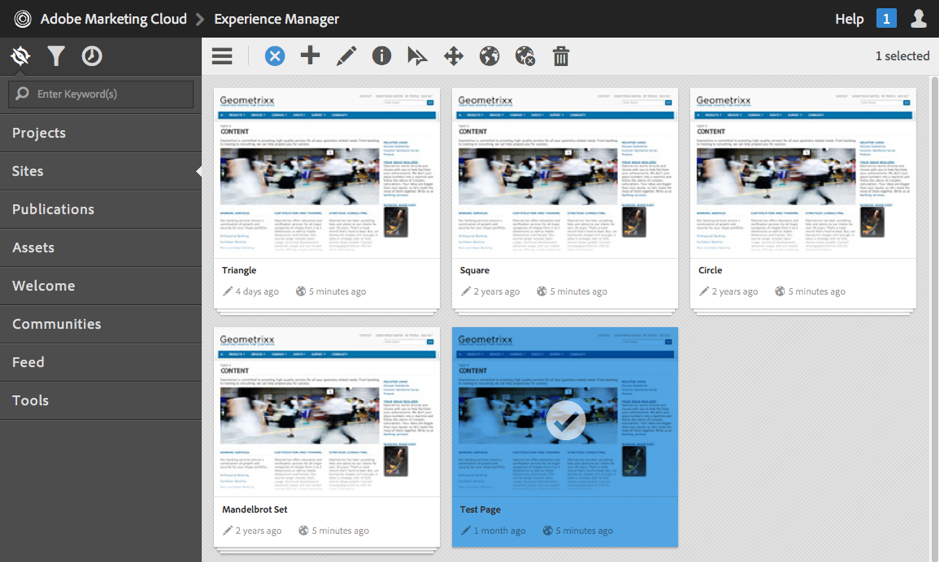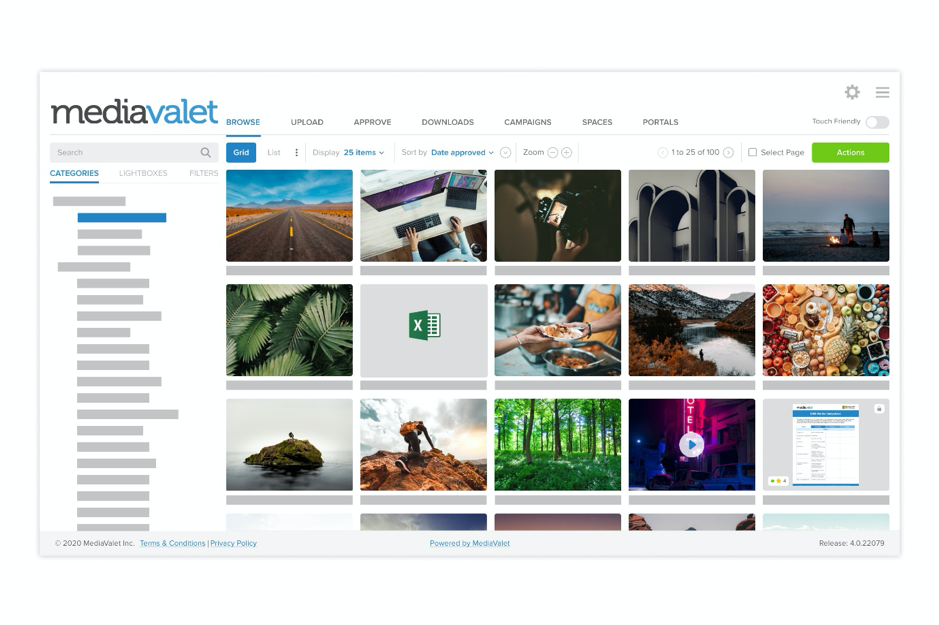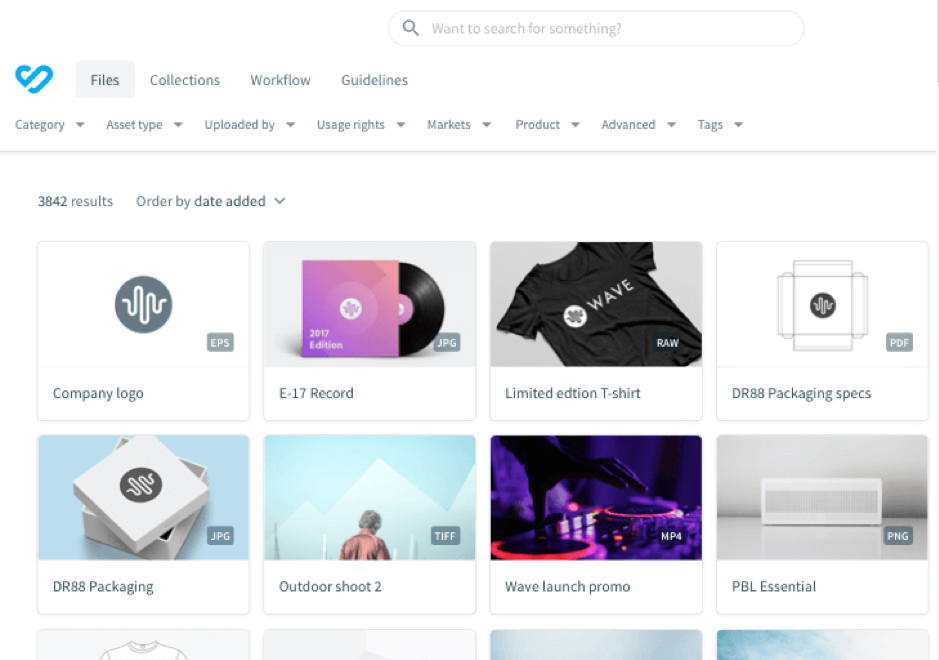
Introduction
Since the turn of the century, several forms of digital content have become important. Consumers and businesses alike have difficulties in navigating all of this digital material. Customers want to regulate their exposure to and enjoyment of digital brand assets. They want a unified experience across all their devices for searching, organizing, and using these resources. The primary goal of most businesses and content marketers is to employ digital media products to get their message in front of potential consumers. That's where Digital Asset Management Software comes into the picture.
Digital asset management software helps you in managing and tracking your media assets with ease. However, if you're not aware of the digital asset manager, don't worry. In this article, you'll get the top digital asset management solutions along with everything you should know about it. Let's get going!
What Defines Digital Asset Management Software?
Digital Asset Management DAM software allows businesses to store centrally, index, search, retrieve, and distribute digital information from a single source of truth. Simple to implement and manage, a DAM system allows authorized users access to an organization's digital asset types, such as photographs, photos, artistic files, video, audio, slideshows, documents, and more.
Software for managing digital assets may take many forms, each one tailored to a different set of requirements and a different set of use cases. Digital asset management (DAM) system may be used mainly by a big retail firm to manage e-commerce product photography.
Most DAM systems also include supplemental features beyond simple file storage, such as brand standards and project workflow management software, to streamline processes across the digital content lifecycle.
How Does a Digital Asset Management Software Work?
DAM helps businesses manage, organize, and disseminate their digital a with more precision, efficiency, and safety by offering the procedures, protections, and tools required. A digital asset management system (DAM) is built to aid in these pursuits and is usually an essential part of a DAM strategy.
A digital asset management system (DAM) is a hub for storing and managing digital assets, accepting input from various sources, and distributing those assets to the appropriate destinations. The DAM system allows authorized users or the system administrator to add media assets such as logos, photos, and videos. The system reads the files and adds metadata to them. Metadata is data that provides context to other data, describes an item, and facilitates discovery.
Furthermore, the DAM platform regulate which user groups have access to which assets and how they are used. After assets have been reviewed and authorized, users may access them via various channels, including portals, file sharing, share links, automate workflows, embed codes, and seamless integrations to utilize in their projects or distribute them to others.
Types of Digital Asset Management Software
Different types of digital asset management software are:
Library Asset Management Software
This sort of asset management software often relates to the majority of storage inside a database. An asset may be an archive or an asset library containing various materials such as images video audio movies.
Cloudbased Asset Management Software
The most typical kind of digital asset management software. Cloudbased digital asset management storage enables users to access digital materials backed up and preserved inside your DAM system. More firms have more marketing and creative benefits, and simpler access to success with their content management procedures using a cloud-based solution.
Brand Asset Management Software
Refers to the administration of safeguarding branded assets via a centralized database. This digital asset management software employs revisions, edits, consultations, and updates to carry out digital brand management.
Production Asset Management Software
PAMs, or production asset management software, are used particularly for digital or visual assets, including any form of production for films, television programs, video games, and all types of online media net activity.
Benefits of Using Digital Asset Management Software
DAM systems arose from the broad need for a more efficient, structured, and productive approach for marketers to maintain their valuable digital assets. Today, firms who use DAM — and the software that enables it is reaping the advantages, which include:
- Enriched Metadata: One of the primary advantages of DAM is the simplicity with which you can browse through thousands of files, which is accomplished by labeling assets with metadata. A descriptive annotation to a document allows it to be searched. Metadata is essential for searching since it makes it easy to find precise facts about your digital assets in a rich media.
- Privacy and Permissions: DAM systems aid in centralizing and managing who has access to digital assets by establishing various permissions and access levels. Furthermore, many DAM systems enable users to specify expiry dates on shared links and asset expiration dates to guarantee that critical or out-of-date assets are unavailable after a specified period. This offers marketing teams confidence that their investments are safe.
- Organization: The most significant advantage of using a digital asset management platform is organization. A DAM organizes all creative information so that all creative teams can access the most up-to-date, legally allowed assets, which enable teams to work properly. DAM systems use an understandable structure to store assets, ensuring that no data is lost and that duplicate files are erased.
- Brand Consistency and Integrity: Working with many digital assets may make it difficult for companies to concentrate on growing awareness internally and externally. Decision-makers may use digital asset management solutions to target their fundamental business model and send messages to prospective customers. All graphic assets and marketing materials utilized in a DAM system will be uniform and up to date due to centralization, which provides a sense of integrity to the brand managers. This avoids the usage of assets that are old, unauthorized, or of poor quality.
- Flexibility: It is critical for firms that depend on digital assets to have flexibility in allocating certain resources. Thanks to digital asset management, businesses can make smarter judgments with improved data flow monitoring. A DAM system may assist small, medium, and large enterprises alike. As your company expands and the number of digital assets rises, so does your ability to manage them.
Best Tools for Digital Asset Management
Wondering what the best digital asset management platform is? The following tools are your best bet:
1. Adobe Experience Manager Assets

Adobe Experience Manager Assets is one of the best asset management applications that streamlines and automates all the chores associated with managing your digital assets. Aside from managing assets over their entire lifespan, you may also receive cutting-edge insights about digital asset performance and asset creation.
It supports 3D, AR, VR, and panoramic photographs in addition to the standard file formats for documents, images, and multimedia. This application uses Artificial Intelligence (AI) technology to automatically categorize files and documents, trim photographs, and distribute assets. Moreover, it features a cloud storage to store organize assets.
However, remember that certain complex functions, such as Adobes creative team, of this platform may need technical skills and may not be simple for inexperienced users. In addition, Adobe Experience Manager provides file version history and asset management in many languages.
2. MediaValet

No more sifting through folders of outdated assets—with MediaValet, you have great storage, organization, search, and distribution capabilities for your documents, photographs, videos, and more. The program makes use of a centralized cloud-based interface. Even with terabytes of files, uploading and downloading are straightforward. MediaValet supports limitless users, so no matter how big or small your team is, they'll be able to quickly upload freshly developed assets to your library or use them for sales presentations, document management, digital rights management, marketing initiatives, or anything else.
Furthermore, MediaValet assists you in effectively tagging your new assets. The software's intelligent AI can auto-tag photos and videos by detecting information such as color, items presented, persons, text, and more. Smart transcription aids in video translation and can even be transcribed into other languages.
3. Bynder

Bynder facilitates the creation, discovery, and use of digital assets via faster collaboration and an emphasis on brand consistency throughout all markets and platforms. It offers cloud digital asset management through a modern, simple interface. You can integrate your files with Google drive using this tool.
One single area to store all brand and campaign assets, direct asset availability for users worldwide, easier file searching, built-in security measures such as two-factor verification, unlimited users right and access settings to secure your material, and more are among the features. Furthermore, it offers excellent support for a wide range of file kinds, flawless browser integration, user-friendliness for transmitting brand guidelines, and several other outstanding features.
The main drawbacks are that certain UI aspects are tedious or awkward, and additional customizability choices would benefit large-scale projects.
[BONUS] ProMAX Platform – Best Digital Asset Management Software Alternative
If you want a digital asset management software alternative with shared storage, you won't get a better option than the ProMAX Platform in the market. ProMAX Platform serves as the basis for your creative team's shared storage. It comes with everything you require to interact and creative collaborate in a group setting. Adobe Panels, Avid Bin Locking, Dropbox connection for remote collaboration, and much more are available on the Platform.
Platform was built as an all-in-one tool for creative teams and external partners of all kinds and budgets to manage media assets, archive, and securely store media. ProMAX Platform provides high-performance storage server solutions that fit your needs right now. As your business grows, so will your Platform, which will provide you with all the functions and depth of features you need today and in the future.
Data encryption is now available on ProMAX data storage servers. ProMAX offers 16- and 24-bay storage systems with drive bay speeds starting at 5500 MB/s (on SSDs) with a strong focus on video performance. Platform succeeds in keeping IT teams as pleased as creative teams, whether security adherence or integrating with various domains.
Furthermore, Platform produces proxies for anything from ProRes to AVC creative files, allowing you to preview that "A011 C003 080213.r3d" file before spending an hour getting it from the cloud, so no external user can access your assets files, which speaks volumes about the protection it provides.
Conclusion
For your business to survive in this era, the first thing you need is to manage and organize the assets of your business. And with the introduction of digital asset management, organized assets are just a click away. Moreover, we hope that you've found everything you need about Digital Asset Management Software after reading this article. Also, we recommend using the ProMAX Platform if you prefer a shared storage solution for managing your assets. 🔥🔥🔥


